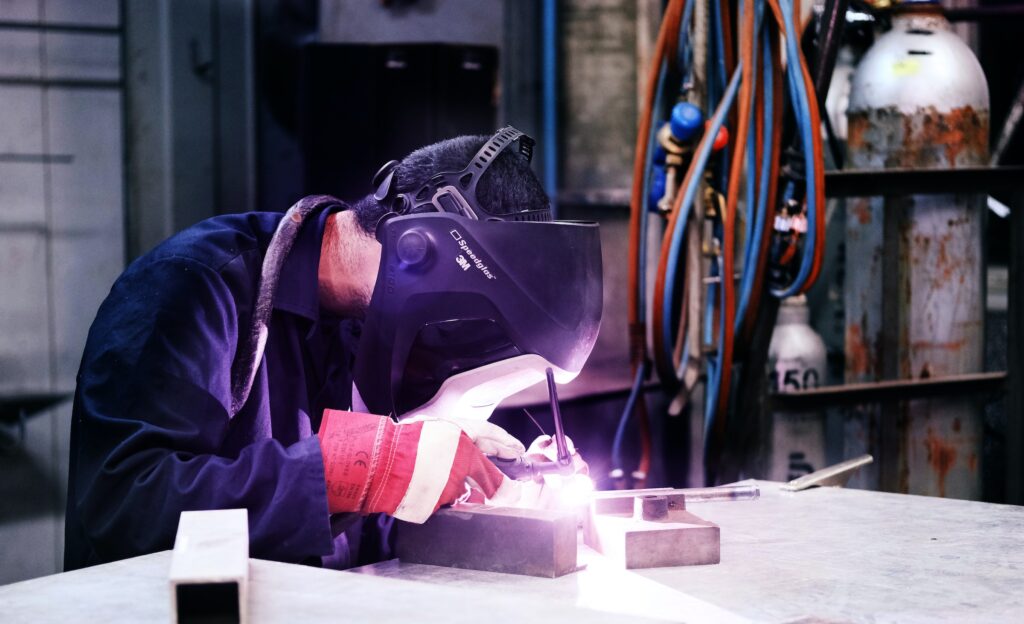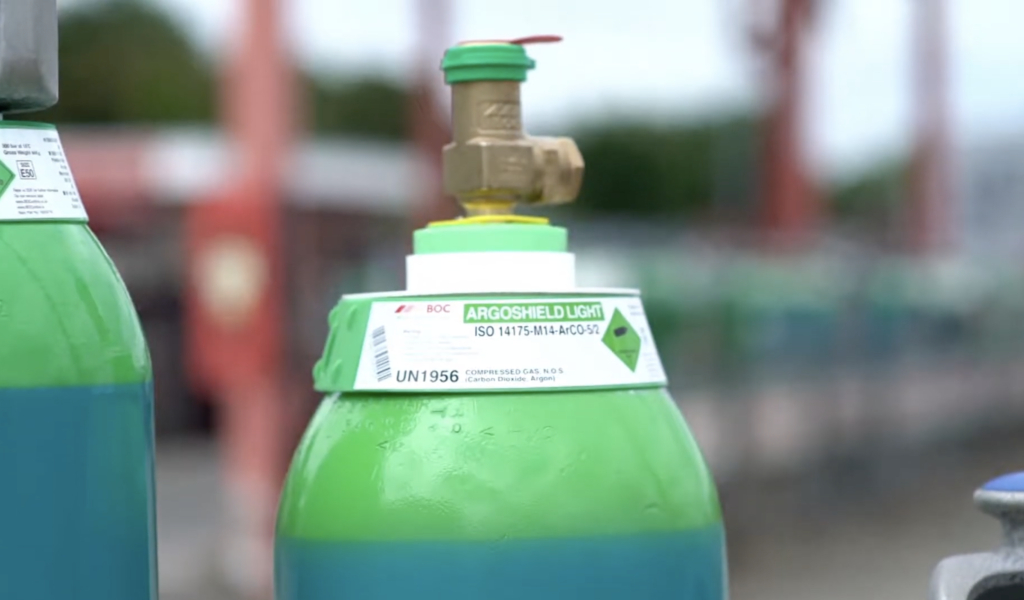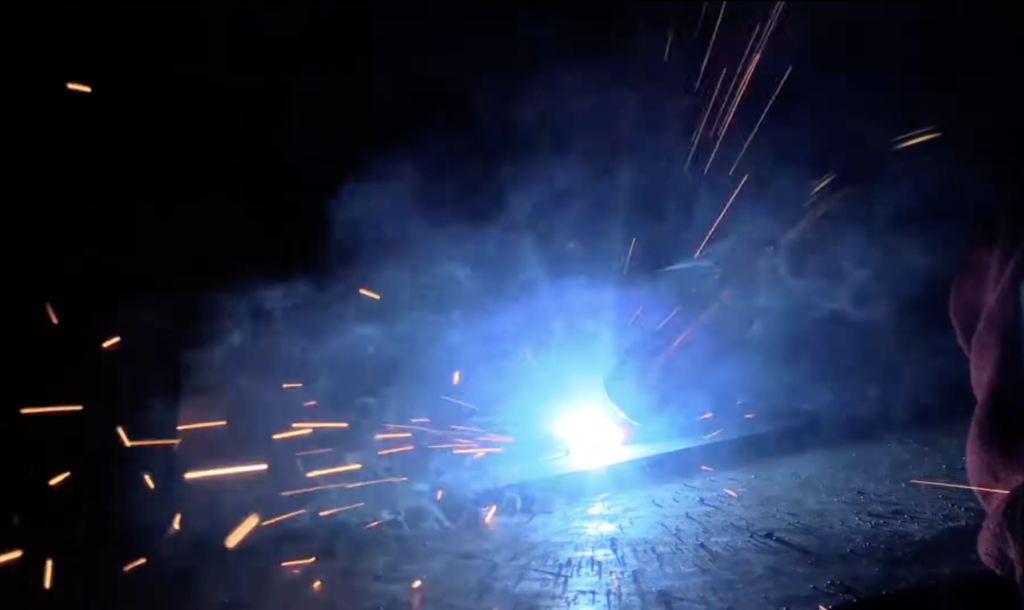Made the decision to buy a MIG welder and start fabricating? Excellent. Having chosen a gas MIG welder (check out my recent column for my thoughts on that) there’s one other small detail to take care of: the gas.
MIG stands for Metal Inert Gas and gas MIG welders rely on a shroud of inert or partially inert gas around the arc and “weld pool” as welding progresses. Excluding air prevent oxides or “slag” building up on and in the weld, contaminating and weakening it and making a hideous mess of the job at the same time. Gasless MIG welding (for use where gas isn’t practical like outside on a windy site where the shroud will be blown away) and old-school arc welders rely on the filler wire or rods being pre-coated with flux to minimise the oxidation, but these won’t produce as clean a weld as gas.

To make matters slightly more complicated, there’s a choice of gas that can be used with a MIG welder, and these are typically CO2, CO2/argon mix (also with a dash of oxygen), and pure argon. Why the alternatives? Because different types or blends of welding gas are better suited to certain types of welding and the material being welded. As most of us car meddlers are interested in welding ferrous metal in the form of thin steel bodywork, or perhaps slightly thicker brackets and such-like, I’ll focus on that to avoid drowning in a mire of complexity.

Steel sheet can be welded using CO2 or argon/CO2 mix. Either will work but although pure CO2 can be a slightly cheaper option, argon/CO2 is superior and the difference noticeable when welding. CO2 produces a rougher arc with more spatter than argon/CO2 which results in a nice, even arc and a more malleable weld. You could say it’s a smooth, happy arc whereas CO2 produces an unhappy arc which grumbles and crackles as the weld progresses. Apart from anything else, welding with a happy arc is far more pleasing.
Surprisingly, the blended gas is quite different to the pure CO2 consisting primarily of argon rather than the other way around. Blends vary depending on the supplier, but a typical blend for the thicknesses of steel we’re interested in is around 95 percent and just 5 percent CO2.
Now although I said earlier that the gas shroud in MIG welding is inert, that’s not completely true. Although CO2 is regarded as an inert gas which doesn’t support combustion (it’s used in fire extinguishers) it becomes slightly reactive in the very high temperature of an electric arc. The result is that it produces better weld penetration and a flatter weld which is desirable for a neat, strong job.

There’s one final alternative too, argon/CO2 with a dash of oxygen. Although this might sound like nonsense (after all, MIG stands for Metal Inert Gas and oxygen definitely isn’t inert), it’s probably the best option of all.
Another expression for using these blends is MAG (Metal Active Gas) although MIG has become the accepted term and if using pure argon (a must for non-ferrous work) it’s spot on. An example of argon/CO2/oxygen blend is BOC’s (British Oxygen Corporation) Argoshield Light which is 93 percent argon, 5 percent CO2 and 2 percent oxygen. According to BOC, it’s specially formulated for welding sheet mild steel less than 4mm thick and therefore is perfect, certainly for my own workshop needs.
BOC explains that the low level of CO2 and oxygen minimise the likelihood of blowing holes in the steel and the oxygen improves the flow of the weld producing a flatter result, and reduces the need to grind it down when complete. It’s been my favourite for years and it comes in the smallest “X” size bottles too which stand just under a metre tall.

That brings us neatly to the last point. Is it best to buy small, disposable bottles of gas like the SIP bottles, hobby gas which usually works by paying a returnable deposit on a larger bottle and just paying for the gas, or opening an account with BOC (or equivalent outside the UK) and paying rental on the bottle and a further fee for the gas fill?
My own experience has been that small disposable bottles become expensive if doing much more than occasional work. I’ve found hobby gas can be unpredictable, with part fills or leakage from bottles (and others I know have had a similar experience) whereas BOC may be seem more expensive but is reliable and the gas of the highest quality.
Because MIG welders are mostly dual-purpose gas or gasless these days, they’re often supplied in gasless mode and that means buying a regulator and hose separately. A regulator for the small disposable bottles is a simple tap, whereas BOC bottles require a full-fat, dual-gauge regulator showing the feed pressure and also the quantity of gas remaining. The latter is by far the best option in my experience and apart from giving the best results, cuts out guesswork and makes life in the workshop far more enjoyable.
Read more
Socket Set: Zinc plating – your most dazzling DIY project yet
Edducation: What’s the best project car for this father/daughter team?
Hard Craft: A.C.F. Howell metal finishers is a shrine to shine









